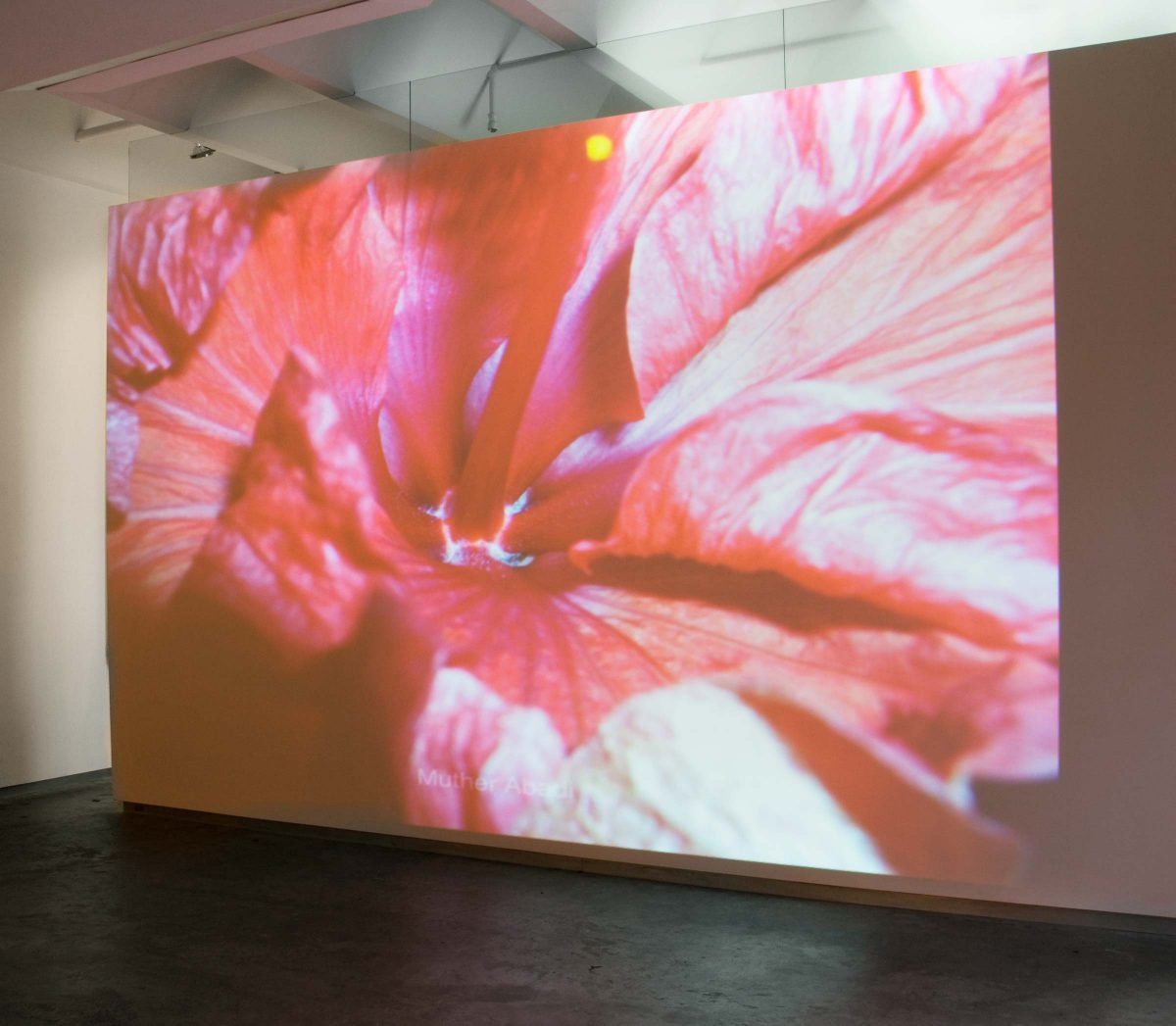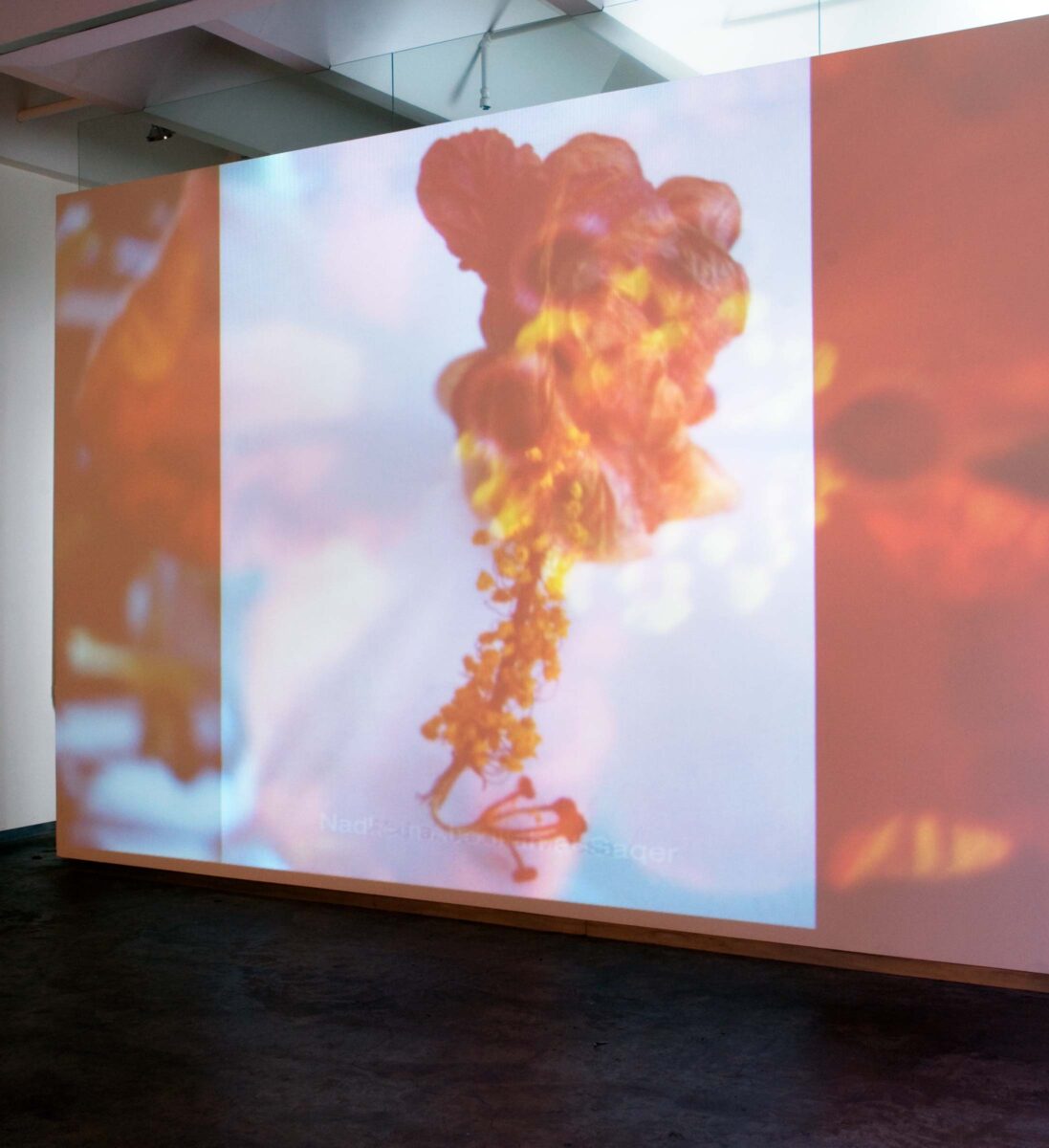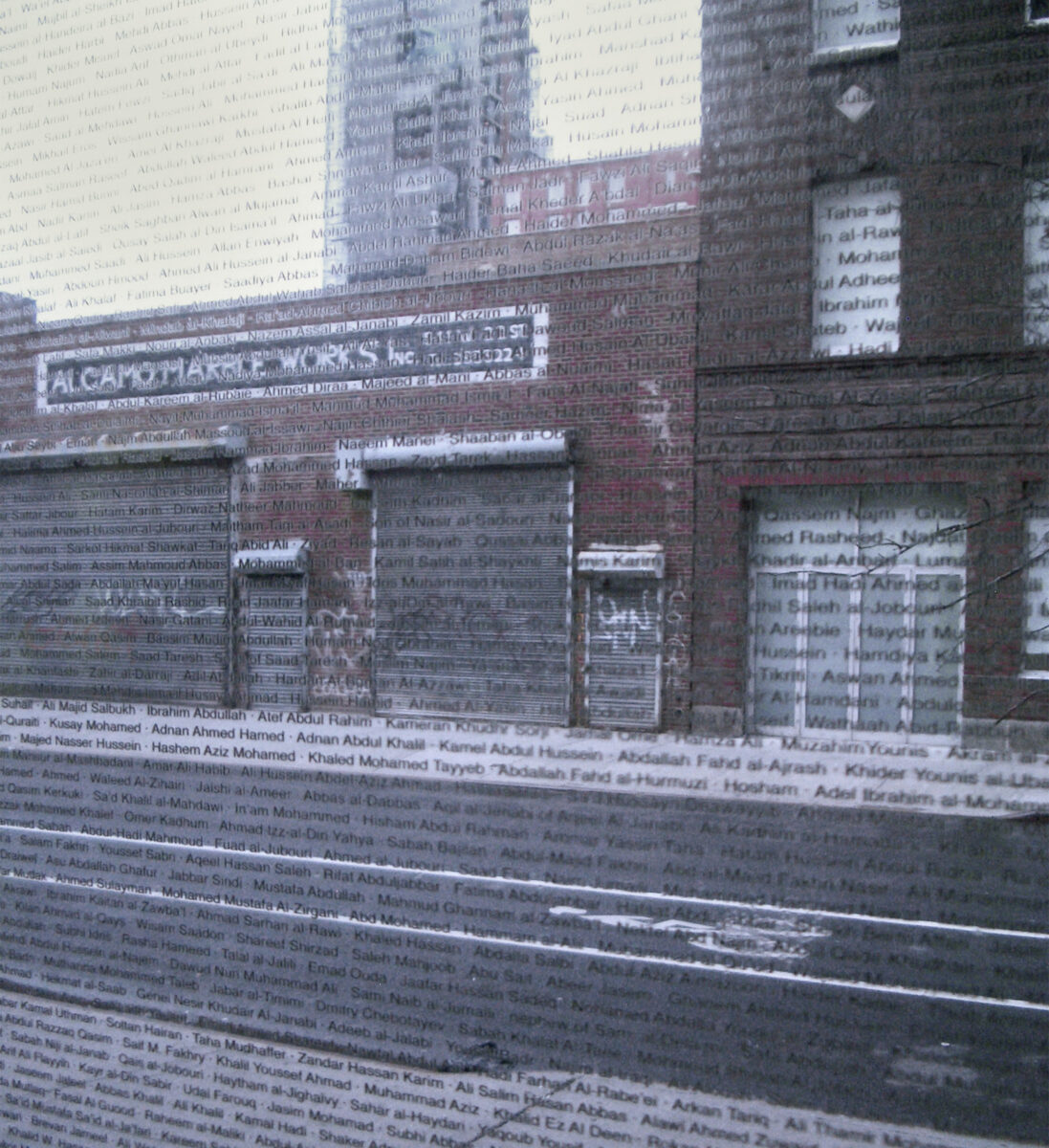
Video and sound installation
Installation view, Carolina Nitsch Project Room, New York
Samar Hussein commemorates the estimated 100,000 civilian deaths caused by the American-led war on Iraq since the March 20, 2003 invasion. The project was conceived as an installation in which a window front covered with the names of the dead darkens the room in which an endless loop of images is projected. Iraqi actor Abbas Noori Abood speaks the names of the fallen Iraqi, one for each image.
Imagery of a blooming hibiscus flower was used as an analogy for the cycle of human life, from the unfurling of the first bud to the rotting of a decaying and shriveled blossom. The flesh-colored tones of these flowers along with with their often surprisingly sensuous if not sexual forms, lend themselves to the memory of human life, its beauty and joy, and the memory of flesh, wound, and death.
The blooming period of the hibiscus covered a distinct timeframe, as did each individual blossom. Photography’s intrinsic relationship to time forever sends a once-present moment into the past, which continuously slips further and further away from us. The obtained, tangible image holds the breath of that very moment.
Time, light, and subject—photography’s core components—establish a sense of transience and death within this medium. The flower, as a part of nature and its analogous appearance to the human body, the conceptual properties of photography, and the very duration of this war, all made themselves available to give evidence to my eulogy.
Using information obtained from the Iraq Body Count project, names of the dead were applied sequentially to the hundreds of photographs—one name per image—in chronological order of their death. The first image and the entire project are named after Samar Hussein, a 13-year-old girl, and the first civilian to die whose identity was recorded.

